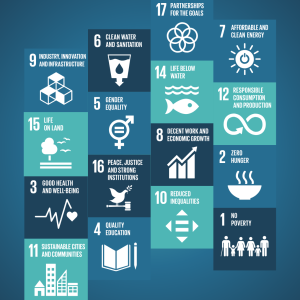Indikatoren in dieser Dimension analysieren, inwieweit Migrantinnen und Migranten hinsichtlich des Zugangs zu grundlegenden sozialen Diensten wie Gesundheit, Bildung und soziale Sicherheit den gleichen Status wie Bürgerinnen und Bürger haben. Es beschreibt die Rechte von Migrantinnen und Migranten auf Familienzusammenführung, Arbeit, Aufenthalt und Staatsbürgerschaft. Die Ratifizierung der wichtigsten internationalen Konventionen fällt ebenfalls in diesen Bereich.main.
Indikatoren in dieser Dimension bewerten die institutionellen, rechtlichen und regulatorischen Rahmenbedingungen der Länder im Zusammenhang mit Migrationspolitik. Dimension 2 beinhaltet auch das Vorhandensein von nationalen Migrationsstrategien, die mit Entwicklungspolitik und -ansätzen im Einklang stehen, sowie die institutionelle Transparenz und Kohärenz in Bezug auf Migrationsmanagement. In diesem Bereich wird auch untersucht, inwieweit Regierungen Migrationsdaten erheben und verwenden.
Diese Dimension konzentriert sich auf die Bemühungen von Ländern, in migrationsbezogenen Fragen mit anderen Staaten und einschlägigen nichstaatlichen Akteuren, einschließlich Organisationen der Zivilgesellschaft und des Privatsektors, zusammenzuarbeiten. Kooperation kann zu Verbesserungen der Regierungsführung führen, indem Standards angeglichen und angehoben, der Dialog intensiviert und Strukturen der Bewältigung von Herausforderungen geschaffen werden.
Diese Dimension umfasst Indikatoren für die Politik der Länder zur Steuerung des sozioökonomischen Wohlergehens von Migrantinnen und Migranten, z.B. die Anerkennung der Bildungs- und Berufsqualifikationen von Migrantinnen und Migranten, Bestimmungen zur Regelung der Studentenmigration und das Bestehen bilateraler Arbeitsabkommen zwischen Ländern. Die Indikatoren konzentrieren sich gleichermaßen auf Maßnahmen und Strategien im Zusammenhang mit dem Engagement der Diasporamitglieder und den grenzüberschreitenden Geldtransfers von Migrantinnen und Migranten
Diese Dimension befasst sich mit der Art und dem Grad der Bereitschaft von Ländern, wenn sie mit Mobilitätsdimensionen von Krisen konfrontiert sind, die entweder mit Katastrophen, der Umwelt und/oder Konflikten zusammenhängen. Die Fragen werden verwendet, um die Prozesse für Staatsangehörige und Ausländer sowohl während als auch Katastrophen zu ermitteln, einschließlich der Frage, ob humanitäre Hilfe für Migrantinnen und Migranten genauso verfügbar ist wir für Bürgerinnen und Bürger.
Diese Dimension analysiert den Ansatz der Länder zum Migrationsmanagement bezüglich Grenzkontroll- und Grenzschutzmaßnahmen, Zulassungsvoraussetzungen für Migranten, Vorbereitung und Flexibilität bei erheblichen und unerwarteten Wanderungsbewegungen sowie die Bekämpfung des Menschenhandels und des Menschenschmuggels von Migrantinnen und Migranten. Es werden auch die Bemühungen und Anreize zur Unterstützung der Integration der zurückkehrenden Staatsbürgerinnen und -burger bewertet.
This local Profile describes examples of well-developed areas of the County of Nairobi (Kenya) migration governance structures and areas with potential for further development, as evaluated through the six domains of the Migration Governance Indicators (MGI). These address migrants’ rights, a “whole-of-government” approach, partnerships, socioeconomic well-being of migrants, the mobility dimensions of crises, and safe and orderly migration.
Click the icons on the wheel to explore the key findings.
The Migration Governance Indicators (MGI) initiative is a policy-benchmarking programme led by the International Organization for Migration (IOM) and implemented with research and analysis from the Economist Intelligence Unit. Funding is provided by IOM Member States.
Migration Governance: examples of well-developed areas
- The Department of Health Services of the Nairobi City County Government (NCCG) provides primary health-care services in public hospitals to all residents – including all migrants in the county, irrespective of migratory status.
- The Nairobi City County Early Childhood Development and Education Act (2021) includes provisions prohibiting discrimination in terms of education access based on any grounds, including race or social origin, disability, language, or culture.
- NCCG has put in place measures aimed at protecting street children, including migrant children, unaccompanied minors and children left behind
Areas with potential for further development
- Only Kenyan nationals have access to social housing in Nairobi, as a national ID is needed to access the county’s social housing programmes.
- There are no mechanisms in place at the county level that support international migrants in accessing county services.
- There are no specific measures to combat discriminatory practices towards migrants in the provision of social services at the county level.
Migration Governance: examples of well-developed areas
- The Council of Governors, including Nairobi City County Government, are key stakeholders in the National Coordination Mechanism on Migration and they took part in the development of the draft Kenyan national migration policy.
Areas with potential for further development
- County-level public servants receive training on cultural sensitivity related specifically to migrants’ rights on an ad hoc basis.
- There is no intergovernmental mechanism responsible for coordinating migration issues at the county level.
Migration Governance: examples of well-developed areas
- The county of Nairobi is part of the African division of the United Cities and Local Governments (UCLG) network and participated in the Africities Conference (2022) on the Implementation of Agenda 2030.
- The Nairobi City County Government (NCCG) collaborates on migration issues with different United Nations agencies.
- There are local provisions at the county level to formally engage civil society organizations in discussions on migration-related policies.
Areas with potential for further development
- NCCG is not part of bilateral programmes for city-to-city cooperation within Kenya, specifically on international migration-related issues.
- NCCG does not formally engage with members of the diaspora or academia in agenda-setting and the implementation of migration-related programmes and policies.
Migration Governance: examples of well-developed areas
- The Nairobi City County Government has collaborated with several civil society organizations and non-governmental organizations on the provision of livelihood services and support to migrants.
- The Nairobi County Annual Development Plan 2021/2022 (2020) presents annual rural–urban migration data projections based on the 2009 and 2019 national censuses.
- Areas with potential for further development
- There is no local-level assessment for monitoring the local labour market demand for immigrants.
- The county does not collect or publish migration-specific data as this is done at the national level.
- There are measures, guiding principles and county laws governing the ethical recruitment of migrant workers in Nairobi County that would need enforcement and improvement.
Migration Governance: examples of well-developed areas
- The Nairobi City County Disaster and Emergency Management Committee partners with consulates and embassies located in Nairobi in the event of a crisis.
- In times of crises , the Nairobi City County Government collaborates with the national Department of Children Services and the National Council for Children’s Services on child protection issues, including migrant children.
Areas with potential for further development
- The Nairobi City County Disaster and Emergency Management Act does not expressly provide for the human mobility dimension of crises nor the specific needs of migrants and displaced persons.
SAFE, ORDERLY AND DIGNIFIED MIGRATION
Migration Governance: examples of well-developed areas
- At the county level, services such as access to justice, health, and early childhood development and education are provided to migrants (including refugees and those with irregular migratory status) through non-governmental organizations in collaboration with the national Government.
- There are capacity-building programmes offered by stakeholders, including IOM, to county officers and the community at large on migration-related issues.
Areas with potential for further development
- The Nairobi City County Government does not have a strategy to combat human trafficking.



